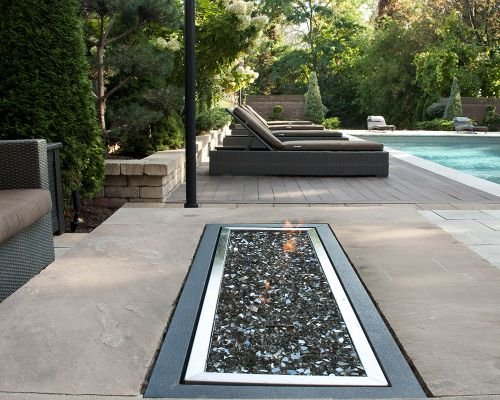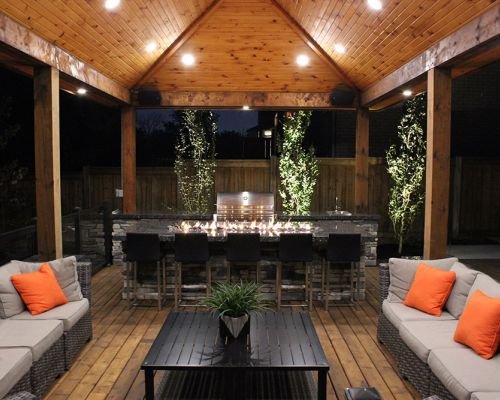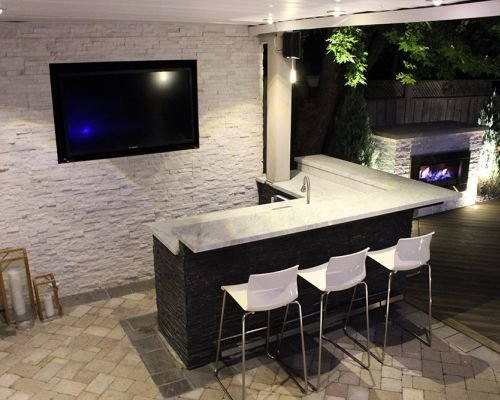Imagine transforming your outdoor space into a safer, more beautiful sanctuary with smart lighting that senses, responds, and adapts—are you ready to unlock these hidden secrets in your backyard? From simple motion sensors to fully integrated systems, modern outdoor lights do more than illuminate—they create dynamic environments that enhance security and elevate landscape aesthetics. As technology evolves, these systems become smarter, more energy-efficient, and seamlessly controllable via smartphones or voice commands, offering unprecedented convenience. But what does the future hold? Will artificial intelligence and 5G connectivity revolutionize outdoor lighting further, making it more intuitive and personalized than ever before? With innovations focusing on sustainability, safety, and style, the next generation of outdoor lighting promises a limitless potential to redefine how we experience our gardens and exteriors. Are you prepared to embrace this luminous new frontier?

Transform Your Outdoors with Smart Lighting: Safety, Style, and Simplicity
Smart outdoor lighting has become an essential feature for modern homes, seamlessly blending safety, security, and visual appeal. Unlike traditional fixtures, these systems automatically respond to your routines and preferences, creating a welcoming atmosphere while safeguarding your property. With technologies like timers, motion sensors, and app controls, smart outdoor lighting offers a level of convenience and efficiency that manual switches simply can’t match. They turn on only when needed, making your outdoor spaces smarter, more energy-friendly, and easier to manage.
The primary goal of smart outdoor lighting is to enhance safety. Well-placed lights along pathways, driveways, and entry points help residents and guests navigate safely after dark, reducing the risk of trips or falls. At the same time, security benefits are significant—motion-activated lights can startle intruders and alert homeowners to activity outside. This combination creates a safer outdoor environment whether you’re home or away, providing peace of mind and deterring unwanted visitors.
Beyond safety and security, these systems elevate your landscape’s aesthetic appeal. Customizable brightness, color, and timing allow you to highlight garden features, architectural details, or trees, transforming your yard into a beautifully lit nighttime space. Many smart fixtures are easy to install, often with DIY-friendly options, and can be controlled remotely via smartphone or voice commands. This flexibility makes outdoor spaces more inviting and adaptable for everyday use or special occasions.
Energy efficiency is another key advantage. Most smart outdoor lights utilize LED technology, consuming less power while delivering brighter illumination. Features like timers, dimming, and motion sensors help minimize unnecessary energy use, reducing utility bills and environmental impact. As sustainability becomes increasingly important, these solutions offer a practical way to enjoy well-lit outdoor areas without compromising eco-consciousness.
Managing outdoor lighting has never been simpler. Smartphone apps and voice controls allow you to adjust settings from anywhere, giving you full control over your yard’s ambiance. Whether turning on pathway lights before stepping outside or creating a festive scene with a few taps, these tools make outdoor lighting effortless and flexible. They also enable scheduling scenes for holidays or gatherings, ensuring your outdoor environment always matches the occasion.
Smart outdoor lighting is reshaping how we experience our outdoor spaces. It’s no longer just about illumination—these systems provide safety, aesthetic value, and convenience in one package. As technology advances, they will become even more integrated into our daily lives, helping us create outdoor environments that are safer, more beautiful, and effortlessly manageable.
From Flame to Fiber: The Evolution of Outdoor Lighting Technologies
Outdoor lighting has evolved significantly from its humble beginnings. Early fixtures were simple and manual—porch lights, lanterns, and floodlights that lacked any form of automation. Their primary purpose was to provide basic illumination, with little regard for energy efficiency or adaptability. These basic systems served their function but offered limited responsiveness to changing needs or routines.
As electrical technology advanced, outdoor lighting became more reliable and brighter. The introduction of electric lights allowed for improved illumination, and timers emerged as a convenient feature, enabling homeowners to schedule lights to turn on and off automatically. However, these systems still operated on fixed schedules, often turning lights on or off regardless of actual activity or environmental conditions, which limited their effectiveness.
The next major step was the integration of sensors, especially motion detectors. These sensors made outdoor lighting smarter by activating lights only when movement was detected. This not only enhanced security—by startling intruders and alerting residents—but also improved energy efficiency by reducing unnecessary lighting. It marked a shift toward more responsive outdoor environments that adapted to real-time conditions.
Solar-powered and low-voltage lighting options gained popularity as eco-friendly alternatives. Solar fixtures, in particular, became appealing because they were easy to install, require no wiring, and harness renewable energy. These innovations laid the groundwork for the sophisticated smart systems we see today, which seamlessly combine automation with connectivity, allowing for remote management and customization.
In recent years, the rise of smart home technology has transformed outdoor lighting into integrated, controllable systems. Wi-Fi and Bluetooth-enabled fixtures now allow users to manage their lights via smartphone apps or voice commands. Features like color-changing options, brightness adjustments, and adaptive scheduling are becoming standard, giving homeowners unprecedented control over their outdoor spaces.
This evolution reflects a broader trend toward automation, energy efficiency, and user-centric design. Modern smart outdoor lighting is no longer static; it’s adaptable, intuitive, and integrated into our connected lifestyles. Each step in this progression has made outdoor lighting more responsive, efficient, and capable of transforming outdoor spaces into safer, more beautiful, and more manageable environments.
Transform Your Toronto Outdoors with Expert Landscape Design
Looking to elevate your outdoor space in Toronto? Toronto Landscape & Design offers top-tier services including natural stone installations, water gardens, irrigation systems, and retaining walls. Our backyard makeover specialists craft personalized retreats that seamlessly blend functionality and beauty. With award-winning designers taking all aspects into consideration, we ensure every detail reflects your vision. Whether you desire a serene backyard retreat or a complete landscape overhaul, our team is dedicated to transforming your outdoor environment into an oasis. Reach out today at 1.416.644.0499 or email mike@torontolandscapedesign.com to start your journey toward a stunning new landscape.

Today’s Smart Outdoor Lights: Features, Brands, and User Adoption
Smart outdoor lighting today offers a diverse range of products that make upgrading your yard both straightforward and impactful. From simple smart bulbs to fully integrated systems, the market provides options designed to boost security and create inviting outdoor spaces. Many of these fixtures can be managed via smartphone apps or voice commands, giving homeowners quick and easy control from anywhere. Features like motion sensors, customizable color settings, and adjustable brightness are now standard, allowing you to personalize your outdoor environment effortlessly.
The adoption of smart outdoor lighting continues to grow steadily as homeowners seek solutions that combine convenience, energy savings, and enhanced security. More people are replacing traditional fixtures with smarter alternatives, recognizing the benefits of automation and remote management. Many modern systems are affordable, easy to install, and suitable for DIY setup, while landscape professionals often recommend them for their ability to increase property value and safety.
Leading brands such as Ring, Philips Hue, and LIFX dominate the market, offering a variety of fixtures tailored for different outdoor needs. These range from motion-activated floodlights to color-changing spotlights and pathway lights. Many products integrate seamlessly with existing smart home ecosystems, enabling centralized control alongside indoor devices. This level of connectivity simplifies management and allows for coordinated lighting scenes that enhance both security and aesthetics.
Energy efficiency remains a key driver behind the popularity of these systems. Most smart outdoor fixtures utilize LED technology, which offers brighter illumination while consuming less power than traditional bulbs. When combined with timers, dimming capabilities, and motion sensors, these lights significantly reduce unnecessary energy use, helping lower utility bills and environmental impact. This focus on sustainability aligns with broader trends toward eco-friendly home improvements.
Remote control features add another layer of convenience. Homeowners can turn lights on or off, adjust brightness, or change colors from their couch or while away on vacation. Voice assistant integration with Alexa or Google Assistant enables hands-free operation, making outdoor lighting management effortless. Whether preparing your yard for a gathering or ensuring pathways are lit before stepping outside, these tools make outdoor spaces more adaptable and user-friendly.
While installation is generally straightforward, some systems require careful planning to ensure proper wiring, weatherproofing, and sensor placement. Many products now include DIY-friendly instructions and modular components, simplifying setup. For larger or more complex arrangements, professional installation can optimize performance and durability. Overall, the landscape of smart outdoor lighting is expanding rapidly, offering solutions that blend security, aesthetics, and energy efficiency into seamless outdoor environments.
By the way, if you ever feel a pro’s advice would make your yard easier to plan, Toronto Landscape Design can help—just email mike@torontolandscapedesign.com or phone 1.416.644.0499.
Real-Life Applications of Smart Outdoor Lighting: Enhancing Security and Beauty
Smart outdoor lighting is already transforming many homes, offering both practical benefits and aesthetic appeal. Homeowners often rely on motion-activated floodlights near driveways and entry points to automatically illuminate dark areas, deterring intruders and making late-night returns safer. These systems provide peace of mind, transforming once-shadowed corners into well-lit zones that enhance security without fussing over switches.
Controlling outdoor lighting via smartphone apps has become a game-changer for daily routines. With a few taps, you can turn on pathway lights before stepping outside or set mood lighting for evening gatherings. Voice commands further simplify the experience, letting you adjust brightness or change colors effortlessly, whether you’re relaxing on the porch or hosting friends. This level of convenience makes outdoor spaces more inviting and adaptable for any occasion.
Landscape designers increasingly incorporate smart fixtures to highlight garden features after sunset. Adjustable spotlights can be directed at trees, sculptures, or flowerbeds, creating dramatic visual effects that elevate your yard’s nighttime curb appeal. Many of these fixtures are solar-powered or wireless, making installation straightforward and flexible, so homeowners can experiment with different lighting arrangements without complex wiring.
Security remains a top priority, and motion sensors play a crucial role. When activity is detected, lights activate instantly, illuminating dark areas and discouraging potential intruders. Many homeowners appreciate how these features provide a sense of safety, especially when away from home. Stories of increased peace of mind underscore how smart outdoor lighting is more than just decoration—it’s a vital tool for protecting loved ones and property.
The ability to create custom scenes for holidays or special events adds a fun, personal touch. With smart systems, you can set colorful lights for celebrations or softer white tones for cozy evenings, all controlled remotely. This flexibility allows you to prepare your yard in advance, ensuring your outdoor environment always matches the mood or occasion, without the need for manual adjustments.
Eco-friendly options like solar-powered fixtures continue to grow in popularity. These lights harness sunlight during the day, reducing energy costs and environmental impact. When combined with motion sensors and timers, they deliver effective, sustainable lighting that requires minimal maintenance while maintaining bright, reliable illumination. This blend of convenience and sustainability appeals to homeowners seeking greener living solutions.
In essence, these practical applications demonstrate how smart outdoor lighting enhances everyday life. It creates safer pathways, highlights landscape beauty, and offers effortless management—all while reducing energy use. As technology advances, outdoor lighting will continue to evolve into an even more integral part of our outdoor spaces, making them safer, more beautiful, and easier to enjoy.

Gazing into the Future: Emerging Technologies and Trends in Outdoor Lighting
Emerging technologies are set to revolutionize smart outdoor lighting, making it more intuitive and responsive than ever before. Artificial intelligence is beginning to enable systems that automatically adjust brightness, color, and patterns based on environmental cues or user preferences. Imagine outdoor lights that sense weather conditions—brightening during a rainstorm or shifting to warmer tones on a clear night—without any manual input. Such personalization will turn outdoor spaces into dynamic environments that adapt seamlessly to different times and moods.
Sensor technology is also advancing rapidly. Future outdoor lighting will feature more precise motion detection and environmental sensing, such as detecting rain, wind, or humidity. These sensors won’t just turn lights on when movement occurs; they will optimize energy use by activating only when truly necessary. This smarter sensing capability promises not only to enhance energy efficiency but also to improve safety and ambiance, reducing waste while maintaining effective illumination.
The deployment of 5G connectivity will make remote management faster and more reliable. Homeowners will manage outdoor lighting effortlessly from anywhere, adjusting settings instantly via smartphone or voice commands. Whether it’s turning on garden lights while commuting home or changing their color for a celebration, rapid connectivity will make outdoor lighting more responsive and integrated with other smart devices, creating a cohesive home ecosystem.
Environmental benefits will continue to grow as innovations focus on minimizing energy consumption. Solar-powered fixtures with smarter energy-harvesting capabilities are expected to become more efficient, providing brighter lighting with less sunlight. These fixtures may learn from weather forecasts and outdoor activity patterns to operate only when needed, significantly reducing environmental impact. This focus on sustainability aligns with broader efforts to make homes greener without sacrificing performance.
Looking further ahead, artificial intelligence and machine learning will enable outdoor lighting systems to become truly adaptive. These fixtures will analyze usage data and environmental conditions to create personalized lighting scenes—brightening during rainy nights or dimming at dawn—without manual adjustments. Over time, they will learn homeowners’ routines, proactively optimizing settings for safety, energy efficiency, and aesthetic appeal, making outdoor lighting feel almost instinctive.
Of course, these advancements come with challenges. Increased connectivity raises cybersecurity concerns, demanding robust protections against hacking and privacy breaches. Higher upfront costs and system complexity might also necessitate professional installation or ongoing maintenance, which could be a barrier for some homeowners. Ensuring these innovations are accessible and secure will be key as the technology evolves.
Ultimately, the future of smart outdoor lighting promises a more seamless, sustainable, and personalized outdoor experience. As these innovations mature, outdoor spaces will become safer, more adaptable, and visually stunning—integrated into our lives in ways we are just beginning to imagine. The potential for smarter, greener, and more responsive outdoor environments is vast, transforming the way we design and enjoy our gardens and exteriors for years to come.